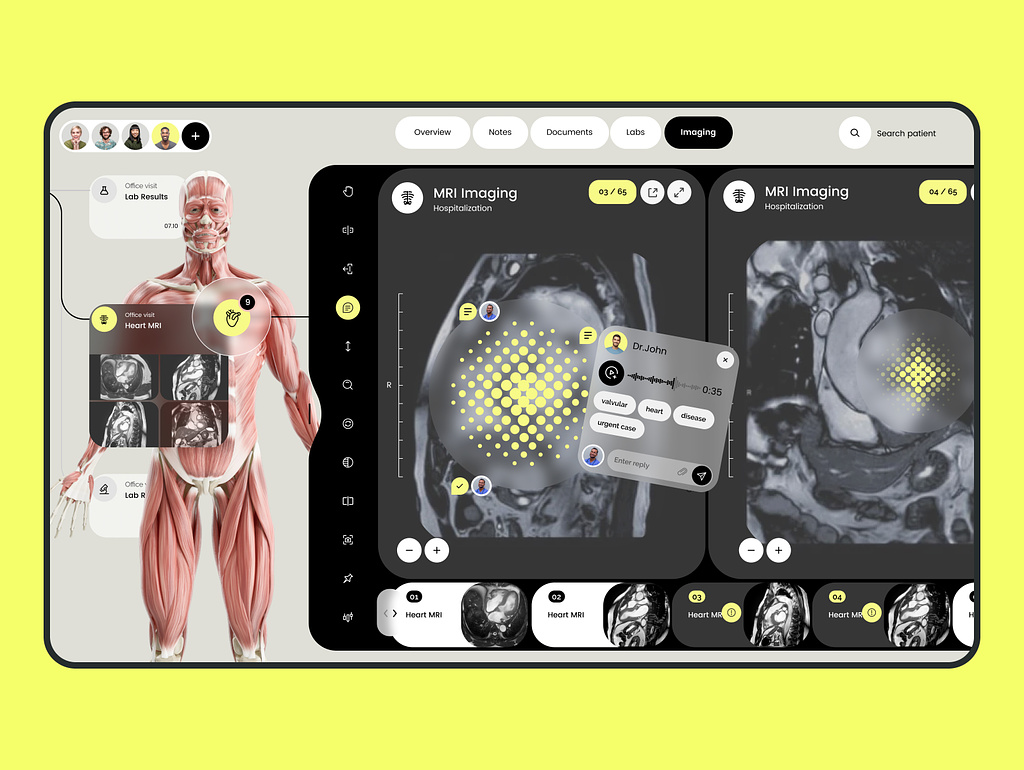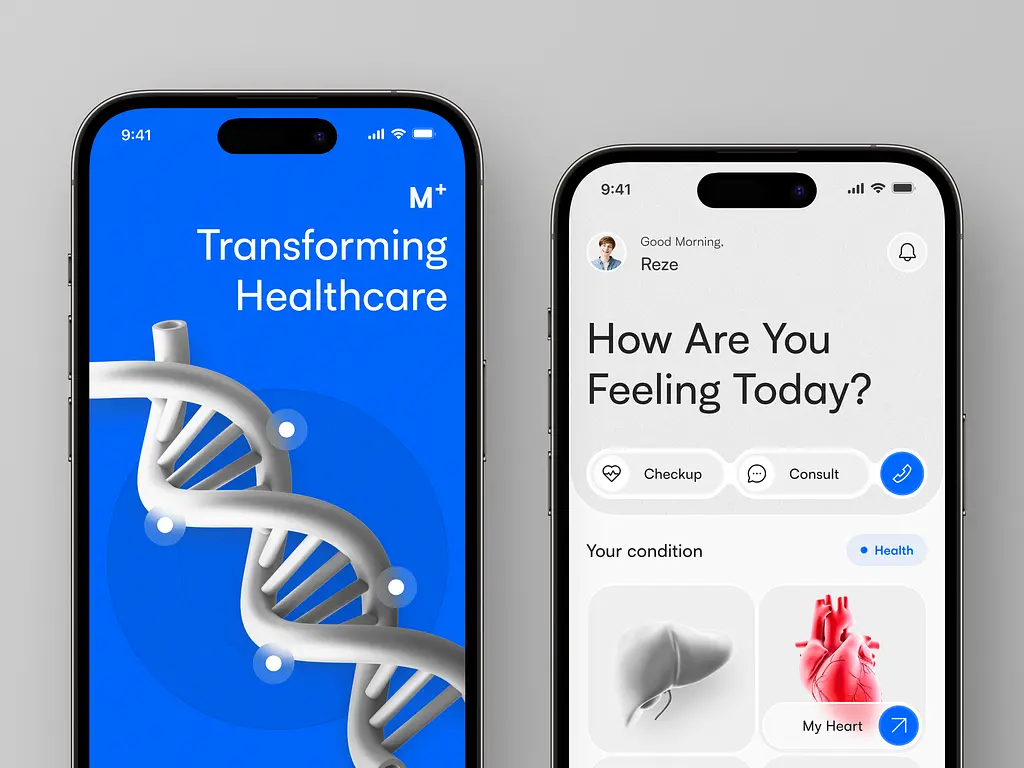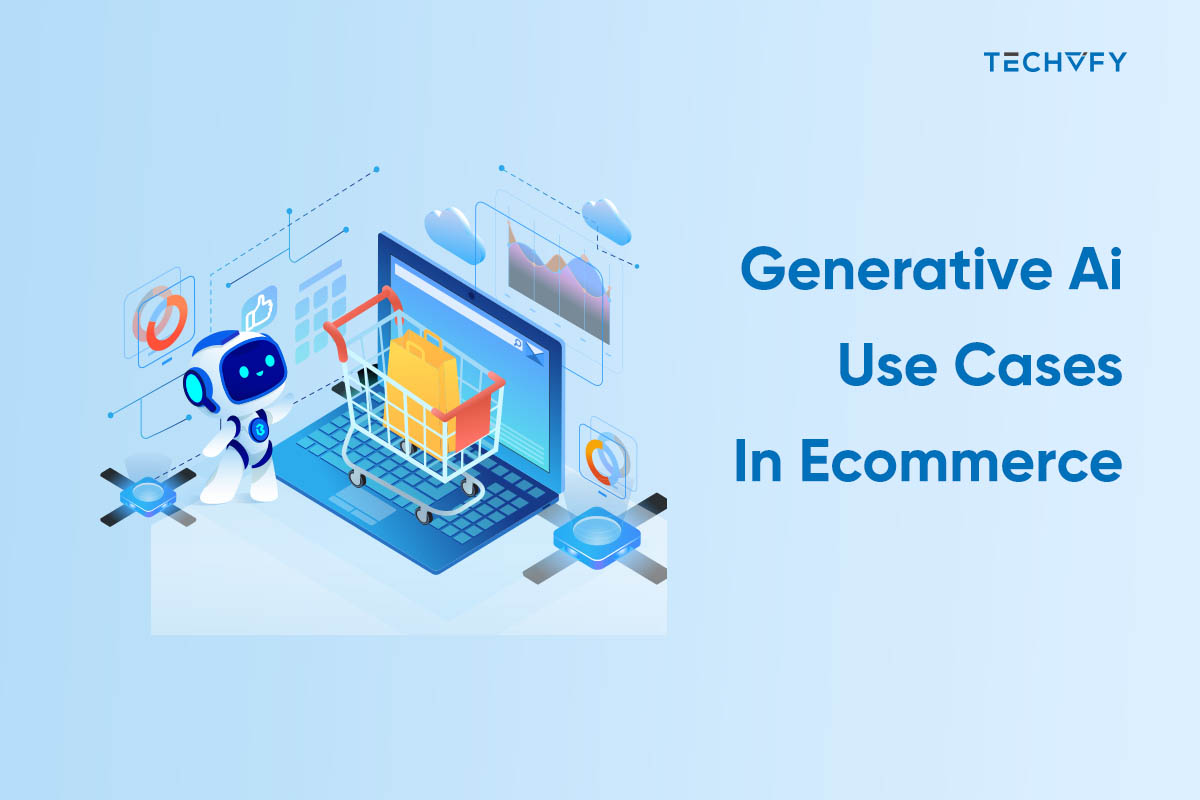Guide to Building Machine Learning Models in Healthcare
- TECHVIFY Team
- 0 Comments
The healthcare industry has seen significant changes by adopting new tools and technologies. Machine learning (ML) is now essential for improving care and efficiently managing patient data.
Well-performing machine learning (ML) models can enhance healthcare by increasing efficiency and accelerating decision-making. These models offer insights from historical data like diseases, family history, and genetic disorders. The first steps in creating healthcare ML models involve identifying the problem and defining the prediction task. This article will help you choose the necessary requirements, developing machine learning models for healthcare, addressing common challenges, and providing solutions to these issues.
I. Step-by-step on how to Build Machine Learning Models for Healthcare
Let’s outline the basic steps needed on how to build machine learning models for healthcare:
1. Identify and Define the Problem
The initial step involves clearly defining the problem to ensure that the solution addresses a specific clinical need and has a feasible path toward implementation. This is critical to ensure the efforts align with actual healthcare outcomes.
- Problem Selection: Identify clinically relevant problems and where current solutions might be lacking. For example, improving the accuracy of early cancer detection.
- Feasibility Study: Evaluate whether existing data and machine learning technologies can effectively solve the problem without infringing on ethical or legal issues.
2. Data Acquisition and Quality Assurance
High-quality data is foundational in machine learning. In healthcare, data integrity directly impacts the accuracy and reliability of diagnostics and predictions.
- Data Collection: Gather data from reliable sources, such as hospital records, patient surveys, and biometric sensors, to ensure a large and diverse dataset.
- Quality Checks: Perform audits and statistical tests to validate the quality and consistency of the data. Address issues like missing data, outliers, and potential biases.
3. Advanced Preprocessing Techniques
Preprocessing refines the dataset, enhancing the model’s ability to learn effectively from the data.
- Normalization and Standardization: Reduce bias due to differing scales and units in the data, providing a uniform scale for better comparison and processing.
- Data Augmentation: Especially in imaging, augmentation increases the robustness and generalizability of the model by artificially expanding the dataset with modified versions of the data.
More articles about Machine Learning:
4. Feature Engineering
Feature engineering extracts more information from raw data, potentially uncovering patterns that simple models might miss.
- Feature Creation: Develop new metrics or combine existing ones to form more predictive features, like calculating the growth rate of a tumor from sequential scans.
- Dimensionality Reduction: Techniques like PCA reduce the computational load and help avoid overfitting by minimizing the number of input variables without losing essential information.
5. Model Selection and Training
Choosing the right model and training approach is crucial for performance. Different models have strengths in handling specific types of data and tasks.
- Algorithm Selection: Choose based on the data type and clinical question. For instance, deep learning can be used for image data, and survival models can be used for time-to-event data.
- Training Strategies: Utilize methods like transfer learning to leverage pre-trained models on similar tasks to reduce training time and improve model performance.
Looking to Outsource Development?
Contact TECHVIFY – Vietnam’s Leading Offshore Software Development & Outsourcing Company, for a consultation and development services.
6. Validation and Model Optimization
Validation ensures the model performs well on unseen data, and optimization enhances its accuracy and efficiency.
- Cross-Validation: Validates the model’s effectiveness across different subsets of data, ensuring it generalizes well.
- Hyperparameter Tuning: Automated techniques like Bayesian optimization help systematically explore the parameter space for optimal model settings.
7. Interpretability
In healthcare, understanding how a model makes decisions is as important as the decisions themselves for clinical acceptance.
Tools like LIME and SHAP help explain individual predictions, providing insights into the model’s behavior and building trust among healthcare providers.
8. Performance Evaluation
Rigorous evaluation using relevant clinical metrics is necessary to validate the model’s practical utility.
- Clinical Metrics: Metrics like sensitivity and specificity are crucial for evaluating diagnostic models, reflecting their accuracy in a clinical context.
- Statistical Analysis: Ensures the model’s predictions are statistically significant and reliable.
9. Regulatory Compliance and Ethical Considerations
Compliance with regulations and ethical standards safeguards patient privacy and ensures that the models are fair and non-discriminatory.
- Regulatory Adherence: Follow laws and guidelines like GDPR or HIPAA, which govern data privacy and patient rights.
- Ethical AI Use: Regular assessments to ensure the AI systems do not perpetuate bias or harm, maintaining ethical use of technology.
10. Deployment and Monitoring
Effective deployment and ongoing monitoring integrate the model into clinical settings and maintain its accuracy over time.
- Integration into Clinical Workflows: Seamlessly integrate ML models with existing healthcare IT systems to enhance rather than disrupt workflows.
- Continuous Monitoring: Implement feedback loops to continuously update the model with new data, adapting to changes in disease patterns or population demographics.
11. Scalability and Generalization
Ensuring a model can be scaled and generalized is crucial for its adoption across various settings and populations.
- Testing for Generalization: Validate the model across different demographic groups and clinical settings to ensure consistent performance.
- Scalability Planning: Prepare the infrastructure to efficiently handle larger datasets and more complex models.
II. Tips to Know When Building Machine Learning Models for Healthcare
The following principles help developers of medical devices recognize and address potential safety and effectiveness risks before they arise. They also prevent mistakes when creating and implementing machine learning models in healthcare. Here are the essential best tips:
Implement Modern Software and Engineering Practices
Ensuring data integrity, security, and privacy in the ML environment is essential for healthcare and life sciences applications. It is important to safeguard your systems against unauthorized access, privilege escalation, and data exfiltration. Collaborate with cloud platform providers to understand their pricing and architectural options. This will help you select the most effective strategy to meet your security and authentication needs.
Align Model Design with Available Data and Intended Purpose
Adapt your model design to fit your data and ensure it matches its specific purpose. Choose a model suitable for the data you are analyzing. The model should effectively address issues such as overfitting, performance drops, and security risks. Make sure you fully understand the product’s benefits and potential risks. The model must provide meaningful performance testing that demonstrates clinical relevance. Its performance should prove that the product can be used safely and effectively.
Ensure the model is strong enough to handle the effects of global and local performance issues and the variability in device inputs and outputs. It should also consider the different patient groups and clinical scenarios it will use.
Consider the performance of the human-AI team as a whole.
When humans interpret the output from an AI model, their interpretation can vary. It’s important to evaluate the effectiveness of both the human and the AI together instead of just assessing the AI model on its own.
Monitor device performance in clinically relevant settings through testing.
Develop and implement test plans following recognized statistical standards. Assess the model’s clinical relevance during testing. Ensure testing is independent of the training data. Examine test performance carefully, considering variations in measurement inputs like patient population, key subgroups, and clinical context. Also, it accounts for confounding factors such as the interaction between humans and AI.
Provide Users with Clear and Relevant Data
Provide clear and relevant information to users, tailored to their context, such as health care providers or patients. Include the following details in the data:
- Intended use of the product and usage instructions
- Performance data for relevant model subsets
- Characteristics of the training and evaluation data
- Acceptable inputs
- Known limitations
- Guidance on interpreting the user interface
- Integration of the model into clinical workflows
Additionally, it keeps users updated about device modifications, model revisions based on real-world performance, reasons behind decision-making when available, and a method for reporting issues with the product to the developers.
Manage Retraining Risks by Monitoring Deployed Model Performance
Regular or continuous monitoring of models in real-world use is necessary to enhance their safety and performance. Additionally, when retraining models after deployment, establish strict controls to prevent overfitting, unintended bias, or model degradation, such as dataset drift. These measures help maintain the safety and effectiveness of the models as the Human-AI team uses them.
Model Maintenance
It is crucial to update your model regularly. Continuously monitor its behavior, performance, and impact to identify and fix any issues that arise during its use. Effective monitoring involves tools like logging, dashboarding, and alerting.
Logging records inputs, outputs, parameters, and metrics for later analysis. Dashboarding displays important data for easy review and analysis. Alerting notifies you when problems or deviations from expected results occur.
The ongoing update and maintenance of machine learning models are essential. This process requires diligent planning, execution, and assessment.
III. Challenges in Developing Machine Learning Models
Machine learning is the main part of data science. It faces several challenges, especially in its early stages. A machine learning model improves with more data samples. However, getting millions of real-world samples is often difficult. To address these challenges, data scientists must organize and clean the data. They use data quality technologies to do this.
Early Development Hurdles
Developing a machine learning (ML) model involves initial challenges such as limited data availability. While a larger dataset improves a model’s accuracy, obtaining millions of real-world samples is often unfeasible. Data scientists must then organize and enhance data quality using specialized technologies.
Overfitting and Underfitting Issues
Overfitting occurs when a model is too closely aligned with its training data and fails to perform well with new, unseen data. This leads to overgeneralization, negatively impacting the model’s effectiveness. On the other hand, underfitting occurs when a model is overly simplistic and misses essential variables needed for accurate outcomes.
Data Security Concerns
Securing every component of an ML system, including frameworks, third-party applications, and infrastructure, is critical to protect against cyber threats. Even trusted employees might pose risks if their personal devices are compromised.
Challenges with Fake Data and Access Control
Handling fake data is crucial, as it can lead to erroneous outputs, like incorrect temperature readings. Moreover, robust access control measures, including encrypted authentication, are necessary to prevent unauthorized access.
Ensuring Accessibility
ML systems need to be accessible and usable by individuals of all backgrounds and skill levels.
Deployment Difficulties
Deployment is a significant challenge, often due to a misalignment with business objectives. A combined expertise in machine learning and business is vital for effective implementation.
Handling Complex Data
Machine learning applications face challenges in processing complex data types, such as videos and images. This includes implementing features like object detection, which identifies elements within images.
Balancing Accuracy with Timeliness
Achieving timely results while maintaining accuracy is a balance; model evaluations often require extended periods to verify predictions. Monitoring metrics like data drift and ensuring the model’s precision and recall across different user segments are essential for maintaining quality.
Conclusion
Machine learning has immense potential to revolutionize healthcare by improving patient care and optimizing data management. From developing to deploying ML models, the process demands strict adherence to clinical and ethical standards, rigorous testing, and continuous maintenance.
Ready to elevate your healthcare solutions with AI and ML? Reach out to TECHVIFY. Our expertise ensures your projects are innovative, compliant, and impactful. Let’s transform patient care together. Connect with TECHVIFY today for top-notch AI & ML services.
TECHVIFY – Global AI & Software Solution Company
From Startups to Industry Leaders: TECHVIFY prioritizes results, not just deliverables. Accelerate your time to market and see ROI early with high-performing teams, AI (including GenAI) Software Solutions, and ODC (Offshore Development Center) services.
- Email: [email protected]
- Phone: (+84)24.77762.666








